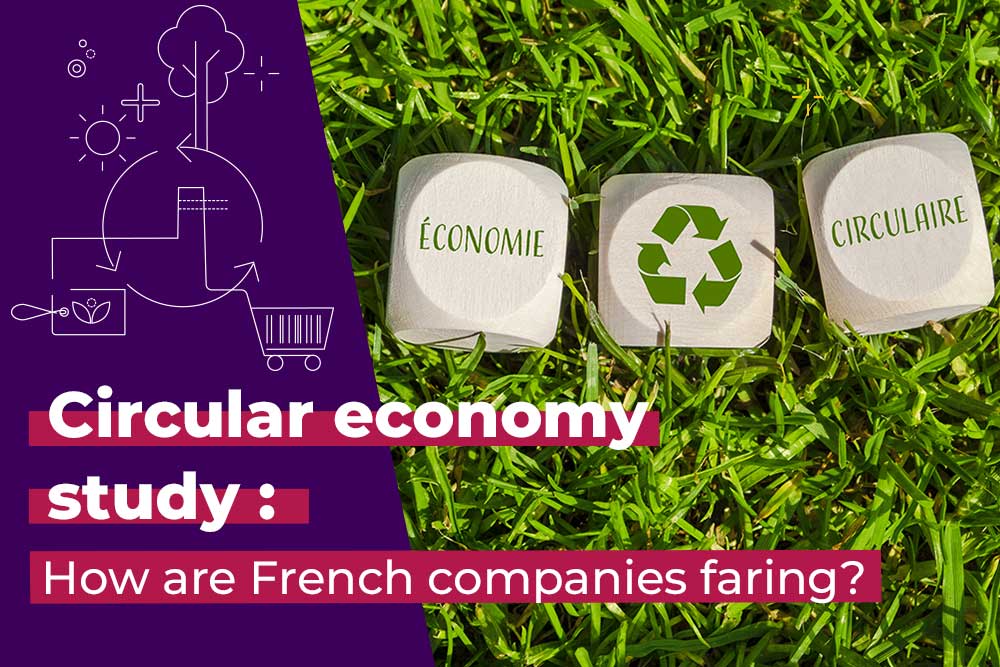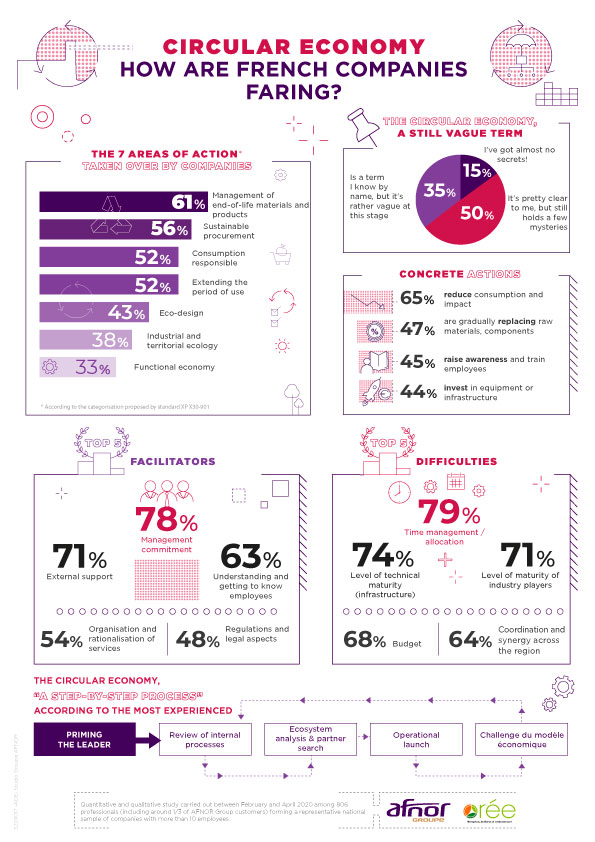Study: each to his own way of moving towards the circular economy

The findings of an AFNOR Group survey of over 800 company representatives paint an encouraging picture: the circular economy is an accessible paradigm, in many different ways.
The AFNOR Group, in partnership with OREE, presents the findings of a study carried out in the first quarter of 2020 to understand how French companies are embracing the circular economy concept.
This paradigm has been proposing for years that we move away from the linear economic model of “extracted raw materials > production > consumption > waste” to achieve a goal: decouple economic growth from the depletion of natural resources by creating innovative products, services, business models and public policies. However, the concept of the circular economy is still a vague one for many of the survey’s respondents, with only 15% considering that the subject holds no secrets for them. It has to be said that the institutional framework is recent: the first government roadmap dates back to April 2018, and the law sacralized the concept only last February (AGEC law).
The management of materials or products at the end of their life cycle, the most significant lever for action
This lack of understanding, which can be compensated for by training in the circular economy, doesn’t hold people back. Respondents are “getting in the loop” in concrete terms, as they indicate that they have taken up the circular economy’s areas of action, each in their own way, whether in the management of end-of-life materials or products (61%), sustainable sourcing (56%), responsible consumption and life extension (52%), eco-design (43%), industrial and territorial ecology (38%) or the economy of functionality (33%).

The study also presents the most widespread concrete actions, as well as the factors that facilitate or hinder the development of the circular economy approach. The most experienced respondents thus deliver a crucial lesson: the circular economy is not an approach without difficulties, but it is within the reach of every economic player. It’s a process of small, gradual victories, starting with subjects that make sense for the company, and gradually revisiting the company’s production model.
How do you get started in the circular economy? They talk about it
“It’s always the company manager who is the trigger, but his success is only possible if he manages to bring people together. One of the fundamentals is that he must be able to present and federate his production manager, his sales manager…”
“What you have to understand is that it’s a global strategy that invites you to think about the product over its entire life cycle, but then agree to break down each stage of a product’s life and say, what can I do in terms of circularity?”
“When you’re into things that are more core-business, it’s more complicated. The brand’s strength is the quality of its packaging, and as soon as you talk to the marketing team, they say it’s ugly. This requires much greater cross-functional coordination.
“Initially, when we launch the approach, we can achieve small, rapid victories through changes in behavior or processes that don’t cost much. But they quickly reach their limit, and the next steps raise the question of whether the business model needs to be reconsidered.